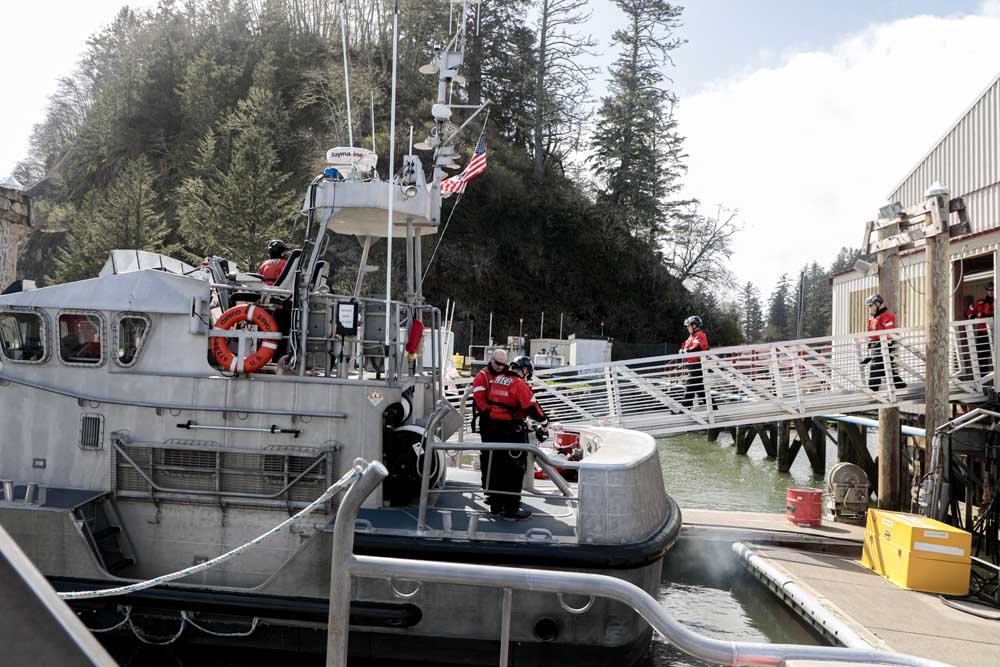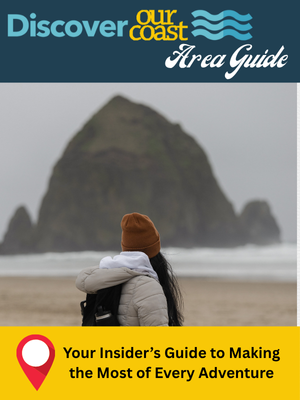Made in the waves: Coast Guard pins newest Surfman
Published 11:57 pm Wednesday, December 11, 2024

- _B0A0146.jpg
ILWACO — ”606, Station Cape Disappointment.”
”589, Station Cape Disappointment.”
”582, Station Cape Disappointment.”
”578, Station Morro Bay.”
”577, Station Cape Disappointment.”
”575, Station Cape Disappointment.”
Surfmen past and present passed the pin, each handing it to the next in line from the earliest to the latest surfman among dozens of crew in attendance, signifying a bond beyond generations.
As each passed the pin — issued to enlisted or officer personnel who qualify as coxswains authorized to operate surf boats in heavy surf — each said their corresponding Surfman number and the station they are certified at.
”572, Station Grays Harbor.”
”554, Station Yaquina Bay.”
”528, Station Grays Harbor.”
”517, Station Tillamook Bay.”
”512, Station Suislaw River.”
”494, Station Quillayute River.”
”490, Station Yaquina Bay.”
”485, Station Morro Bay.”
”484, Station Humboldt Bay.”
”475, Station Chetco River.”
”415, Station Tillamook Bay.”
”407, Station Chetco River.”
BOSN Jason McCommons, Surfman No. 420 and commanding officer of Station Cape Disappointment, then pinned the Surfman badge on the chest of BM1 Derek Samuelson in front of friends, family and fellow crew, officially designating him Surfman No. 611 during a ceremony Wednesday, Dec. 11, at Station Cape Disappointment.
Made in the waves
Surfmen are made, not born.
“Right now there’s a pin floating through the ranks of the crew. Everybody touches this qualification, and Samuelson’s effort to get it,” said BMC Joshua Sheppard, executive petty officer of Station Cape Disappointment, during his opening remarks at the ceremony.
“There’s a few things about this qualification that make it separate from all the others, and one of them is that I don’t think anyone is born ready to be a surfman.”
Surfman is considered the pinnacle of the five certifications available to Coast Guard crew members, achieved through a rigorous and demanding qualification process.
The Coast Guard surfman qualification process is extensive and extremely demanding, with only about 10 certified each year, according to the Coast Guard. This program is intended to attract, guide and develop surfmen trainees. Interested members should expect an average of four years of training to become a qualified surfman.
BM1 Samuelson joined the Surfman program in January 2021.
“Since reporting aboard at Station Cape Disappointment he has almost 1,200 underway hours completed on the Columbia River Bar,” McCommons said. “He’s attended all three courses at the National Motor Lifeboat School, including the heavy-weather coxswain course, surfman course in January 2024.”
The Ilwaco-based National Motor Lifeboat School (NMLBS) helps screen candidates for the eight feeder ports for the Prospective Surfman Program, the majority of which are located along the Oregon and Washington coast.
Operating rescue boats in surf and heavy breaking seas remains one of the most challenging and dangerous tasks Coast Guard boat crews perform. The predominate need for surfmen and consistent training conditions exist in the Coast Guard’s 13th District. Located on the Columbia River Bar in Ilwaco, the NMLBS trains students in one of the most consistent surf zones in the country. The Coast Guard is working to increase the number of surfmen and heavy weather coxswains and is actively seeking candidates to join the Prospective Surfman Program, according to the Coast Guard.
The USCG station at Cape Disappointment responds to hundreds of calls for assistance for commercial and recreational boaters each year, with the peak occurring during late summer.









